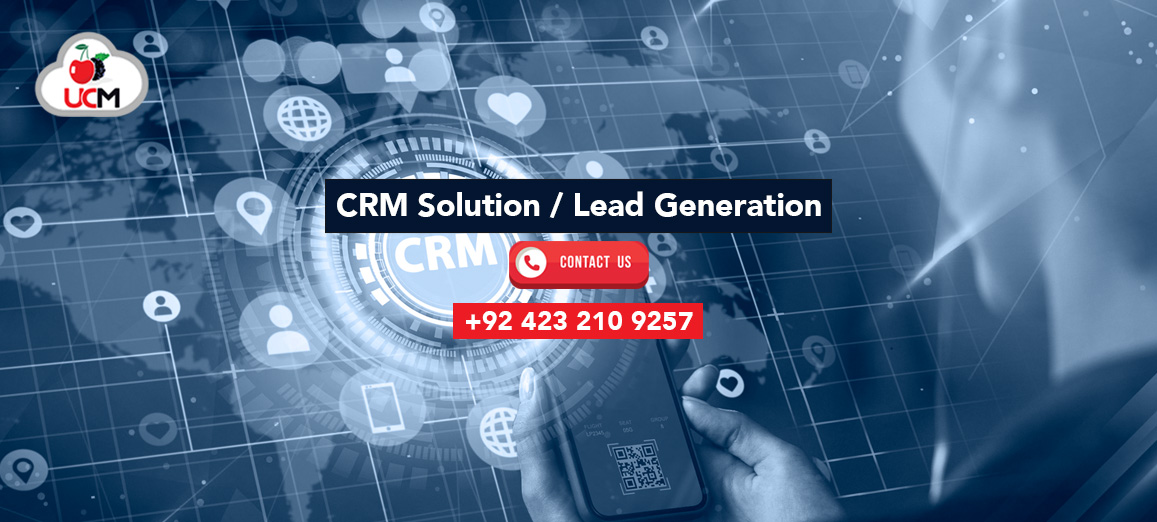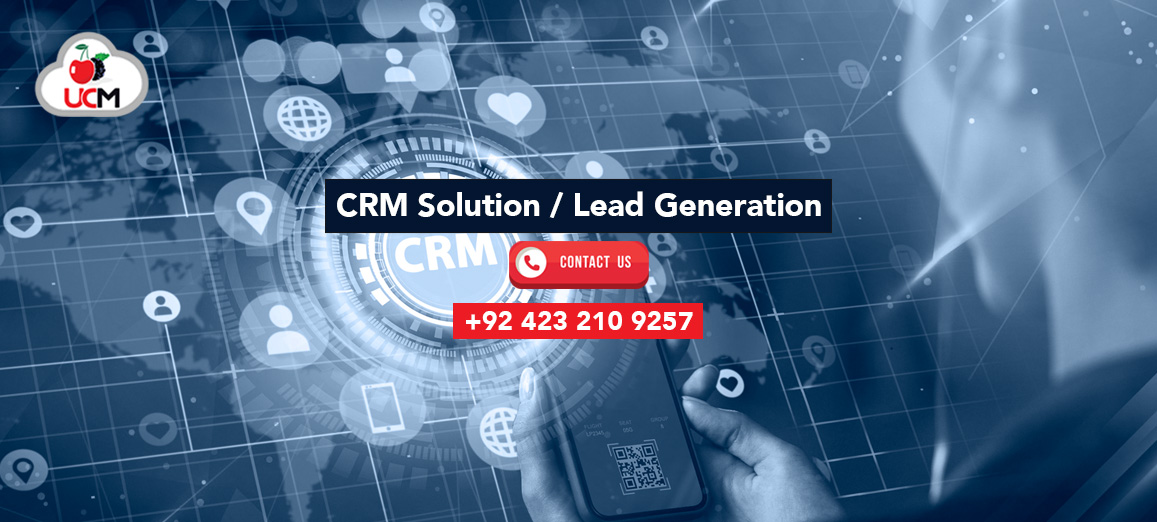8 Proven Strategies for Boosting Leads in Your Inbound Call Center
Significance of Inbound Call Center
Today, despite the availability of multiple communication channels, most customer interactions still happen on the phone. Inbound calls are the fastest way to speak with potential leads compared to outbound calls and web leads especially when just prospects open only 24% of sales emails. Additionally, your agents should have deep product knowledge, active listening, and problem-solving skills to satisfy customers and prospects and build stronger relationships. This is why an Inbound Call Center needs to make a plan of action to turn their inbound sales calls into paying customers. Let’s delve deep into some proven strategies to improve the lead generation process.
What is Inbound Calling or Inbound Call Center?
When a customer initiates a call to a business instead of using another digital communication mode, it is known as an inbound call. Specialized customer service or help desk agents provide customers with the required support and also help your sales teams close deals following customer intentions. Moreover, companies can outsource their inbound calling operations to inbound Call Center service providers to ensure efficient call handling and satisfy customers. Suppose your team situation during peak hours, many customers have to wait for their turn in the queue while some may abandon the call to avoid wasting their time. An incoming call can be a sale opportunity as in a restaurant business. Thus, efficient management of incoming calls is highly critical.
What is the Role of Inbound Calls in Boosting Conversions or Leads?
Companies can convert inbound callers into paying customers but it is more challenging than it sounds. For instance, prospects may call your business for product or service inquiries. The process may involve three or more marketing touchpoints before closing the deal. Customer service teams can help marketers track leads by understanding prospects’ pain points. They can offer them better solutions to make an impact and convince them to become part of your business family. Likewise, most business sales come with existing customers so they can work on them to generate more sales opportunities.
What Makes Inbound Sales Different from Outbound Sales?
Inbound Sales: This occurs when prospective customers contact a business to get more information about their products and services. Inbound agents receive incoming customer calls to provide (AI) them with solutions to their issues. The callers already know about your brand and come to you through advertising, internet searches, and word of mouth. Companies should develop an engagement strategy to move these prospective customers down the pipeline.
- Referrals: When your existing customers suggest your products and services to others and encourage them to try your offerings.
- Digital Advertising: Search engine advertising is also an effective inbound sales strategy in which prospects search online and find the product ad they may be interested in.
- Content Marketing: It works just like the search engine advertising process but prospects click on articles or blogs instead of advertisements.
Outbound Sales: In this call center type, your sales representatives directly reach out to prospective customers who are not interested in your products and services nor expecting the outreach. Typically, outbound agents initiate the calls to keep existing clients engaged or reach new prospects to increase revenue. To convert these prospects into regular customers, outbound sales teams make a lot of effort to find the pain points or preferences. Then they can create a pitch and cold call the prospect to convert.
- Cold Calling: Sales reps find the prospective customers and target audience. Later, they contact them to provide them with knowledge of how their product or services can be valuable to them.
- Trade Show Marketing: Many companies showcase their products at conventions and trade shows to reach the targeted audience they are looking for. Their representatives talk with the attendees to assess their interest in their products.
- Social Selling: Another important outbound sales opportunity is social selling. Many prospects share their problems on social media to find a solution. Sellers can find prospects and leads and present their products as a solution to convert them into sales opportunities.
Which Practices/ Strategies Can Help to Increase Inbound Sales?
Customer retention and accusation have become top priorities for businesses today across industries. Inbound call centers can help them achieve these goals by offering efficient communication between customers and companies. These services evolved as customer service centers but now become the hub of generating and nurturing leads. However, the whole process requires careful planning and a strategic approach. Here are the top 8 strategies that can increase your inbound sales.
1. Focus on Customer Service Experience
Today, modern businesses are not competing on products and prices, the differentiating factor among businesses is the customer service they provide. According to a study, almost 87% of customers were ready to purchase more products and services from companies that prioritize their customer satisfaction. Best inbound call centers for customer support have a great role in offering these revenue-generating experiences. Hence, it is essential to design everything from agent training and KPIs selection to standard greetings keeping customers in mind. Moreover, companies should seek prospects and customer opinions about the experiences by measuring NPS, CSAT, and CES.
- Net Promoter Score: It predicts customer perceptions and thoughts about a product or service. Companies can determine this by asking simple questions about how likely they’ll suggest the products to their friends and family.
- Customer Satisfaction: Companies can measure this through a survey and know how well their products or services satisfy their customer’s or prospects’ needs.
- Customer Effort Score: This includes a customer’s effort to resolve an issue or get inquiries answered, such as how many times they are transferred to multiple agents, repeat information, or switch channels.
2. Improves Your Agent’s Call Handling Skills
Customer service teams are the frontline soldiers of any business. The way they handle each call directly impacts the lead generation efforts. Hence, improving call managing skills should be the top priority of your inbound calling strategy because it contributes to developing a positive customer experience, which encourages leads.
- Active Listening: Agents should listen to their customers attentively to better understand their needs and respond accordingly. Call centers can help agents by clarifying their questions, understanding customer issues, and responding after listening to their problems carefully.
- Polite Tone & Positive Scripts: It helps agents focus on providing solutions and does not sound robotic. Companies can give structured scripts to their teams to offer guidance and navigate the interaction smoothly.
- Continuous Training: Routine training sessions, customer reviews, and performance assessments ensure the maintenance of high-quality service standards. Such training improves your agents’ problem-solving and communication skills increasing the likelihood of converting prospects into actionable leads.
3. Assess Performance with the Right Metrics
Measuring important call center metrics is equally important to assess operational performance. However, this important task may get ignored in data overload. Call centers can set 5-8 important key performance indicators (KPIs) to assess the health of inbound call operations including the customer-related and operational metrics. Here are a few important metrics that are worthy of consideration for call centers.
- Call Abandonment Rate
- Average Handle Time
- Average Wait Time
- First Call Resolution Rate
- Customer Satisfaction Score
- Net Promoter Score
For instance, the first call resolution rate gives you information about customers whose issues are resolved in the first attempt. These customers will be more satisfied with your services than the ones who went through multiple interactions to achieve resolution. Likewise, many customers end their call or hang up before an agent answers the call when tied up waiting in queues leading to an increased call abandonment rate. Companies can work on these metrics to keep prospects and customers satisfied.
4. Automate Routine Processes Where Possible
Cloud-based inbound call centers can leverage the latest technological solutions to automate routine tasks, improve efficiency, and lower agent burden. Let’s take the example of an interactive voice response system. Managing incoming calls can be challenging for call centers and missing a single call means losing a sale opportunity. Call centers can benefit from the IVR system to remove the need for prospects and customers to speak to customer service agents directly. Instead, they can get the response to their simple queries like paying bills or account balance inquiries using this technology.
- Chatbots: Meanwhile, chatbots can also assist customers with simple issues or transfer the collected information to agents to lower call handling time leading to a satisfactory experience.
- Automated Call Distribution & Call Routing: Inbound solutions automatically route and distribute incoming calls based on availability and relevancy. This ensures efficient workforce management and enables agents to spend time in meaningful conversations to generate more leads.
- Speech Analytics: The administration can analyze recorded calls to identify common customer issues and highlight problems that require further attention. They can assess the customer satisfaction level and ensure quality services.
5. Use Phone Call Tracking
Many companies still have not opted for the call tracking that can help you know how many leads through phone calls as a result of PPC campaigns generated this month. Moreover, it provides you with information about return on investment. Some marketing teams still assess their marketing campaign performance through website visits and page views. Although, it is a good strategy for startups, but means nothing for bringing revenue. Hence, companies can assign a unique number to track calls about a particular campaign. Shortly, call tracking is highly effective to get lead information and profitably grow your business.
6. Explore Upsell/ Cross-Sell Opportunities
If a customer or prospect calls your business to resolve any technical or non-technical issue, it does not mean you start marketing your agenda. Offering a good service experience and building stronger relationships with customers and prospects during calls increase upselling and cross-selling chances. You should keep a few things in mind while doing so:
- Don’t Force: Always remember that offering top-notch services is your primary goal and sales are secondary. In case of no room for a sale, don’t push the sales pitch to the offer to which it is not required. Likewise, leave the sales opportunity for another time if the prospect is resistant or uninterested.
- Focus on Value Delivery: Your teams can build positive relationships with customers with time so they should know their client’s needs and how a product can make their life easier. Thus, focus on delivering quality services and addressing their concerns to turn leads into customers.
7. Equip Agents with Essential Data & Tools
The customer service level in the inbound call centers depends on how your agents perform. Regular training and coaching sessions are a great way to enhance agent skills. Still, call centers should equip their teams with advanced tools and data such as company policy, customer previous interactions, and more. For example, inbound calling software automates various tasks particularly IVR technology is very handy to manage inbound calls during busy times. Likewise, call centers can leverage customer relationship management systems to bring customers’ previous interaction history to their fingertips. Your teams can offer personalized interactions and turn an inbound caller into a regular customer.
8. Invest in Digital Transformation to Meet Future Needs
Another important strategy that can enhance your lead generation is facilitating omnichannel communication. This way you can ensure seamless interactions among your teams across various digital platforms like social media, chat, phone, or email offering multiple convenient ways for potential customers to contact your company. Prospects and customers can communicate your business the way they prefer. Meanwhile, your teams can access centralized data from all platforms. They can identify patterns, understand pain points, and explore sales opportunities.
Final Thoughts
Inbound calls are a great way to keep existing clients satisfied and happy and attract new leads to generate more sales. The Inbound Call Center services in Lahore can attract prospects and leads by creating valuable content, ensuring a strong online presence, training agents, and optimizing SEO strategy. You can make your business discoverable for people already looking for solutions. However, more is required to boost leads in your call center such as implementing proven strategies of successful call centers that can turn a product inquiry call into a sales opportunity. Thus, if you are looking for expert guidance to streamline your inbound sales process, schedule a meeting with CherryBerry UCM experts to make this happen.
Advantages of Collaborating With A Call Center Leads Provider
Importance of Call Center Leads Provider
For startups and established companies, lead generation is a top priority to grow their business. This is because, without leads, they have no customers to sell their products. Moreover, countless things are vying for your consideration ranging from product development to sales or customer service. Due to this, it becomes tough to stay focused on the lead generation process. This is where a Call Center Leads Provider comes into play. Companies can enhance the efficiency of their lead generation process and reach their target market by outsourcing their lead generation process to a specialized service provider. This way, you can easily reach those leads interested in your product and most likely want to buy from you. Lead generation is an effective way to establish meaningful connections with potential customers and stay in touch with them to nurture and convert them into paying customers.
What is the Lead Generation?
The process of generating leads for your business is called lead generation which is a crucial part of sales and an effective way to reach new customers. Companies use various strategies and tactics to generate leads and attract them to your website. These include digital marketing strategies like search engine optimization, social media and content marketing. Once the leads are attracted to your business site, you can collect their contact information using live chat or forms for follow-up. Afterwards, you can go to initiate your sales process but you should keep in mind that not all leads intend to buy right away. This is why you should have a lead nurturing plan in hand to continue fostering relationships with them. Eventually, this strategy will convert them into loyal and paying ones.
Benefits of Outsourcing Lead Generation Process
Nowadays, many companies look to outsource their lead generation processes to a specialized Call Center Leads Provider to achieve more sales than their efforts. Let’s take a look at some important reasons why investing in specialized services is a worthy decision.
1. Provide Specialized Services
A lead generation service or firm manages these tasks every day so they have expertise in all phases of lead generation. These service providers know many strategies and tricks to attract leads and prospects for your business. They use different content and advertising strategies to nurture leads into sales during each stage of the sales pipeline. Through high-quality content and personalized outbound campaigns, they draw attention to new leads and nurture them.
2. Expert in Closing More Deals Quickly
As lead generation companies hire experts in the field, they are well aware of the tricks to close deals faster. Moreover, outsourcing companies focus on quality leads to support your business. That is why the quality leads soon become returning customers. Lead generation experts work on marketing qualified leads (MQL) who have a likelihood of becoming regular customers.
3. Allow You to Focus on Business
Companies having staff with no lead generation experience cannot achieve outcomes according to their business needs. Moreover, the lead generation process contains many time-consuming strategies that are also expensive to implement. Lead generation services take such tasks of converting customers into their hands and allow you to focus on core business operations.
Final Thoughts
If you are thinking of managing your leads and sales operations in-house, outsourcing is not a suggested solution for you. However, in case you are struggling to nurture high-quality leads into your sales funnel, you should consider partnering with a specialized Call Center Leads Provider like CherryBerry UCM. This way, you can handle the entire process from attracting leads to closing deals efficiently. It will also save you time and improve ROI.
The Dynamics of a Unified Call Center
An Overview of a Unified Call Center
Amid the dynamic realm of customer service and business communication, the Unified Call Center has emerged as a transformation catalyst. Going beyond the conventional call center model, this integrated solution seamlessly converges diverse communication channels, revolutionizing efficiency, customer satisfaction, and overall business performance. In this comprehensive article, we will delve into the key features, benefits, and transformative impact of a UCC on modern businesses.
I. Understanding the Unified Call Center Concept
A. Integration of Communication Channels:
A Unified Call Center (UCC), alternatively termed a Unified Communications Center, surpasses the constraints of conventional call centers by integrating a multitude of communication channels. This encompasses not only voice calls but also email, chat, social media, and other messaging platforms. The objective is to establish a centralized hub facilitating the seamless management of customer interactions across diverse channels.
B. Holistic Customer Engagement:
The essence of a UCC lies in its ability to provide a holistic view of customer interactions. By consolidating data from diverse communication channels, businesses can gain a comprehensive understanding of customer needs, preferences, and historical interactions. This holistic approach enables agents to deliver more personalized and effective customer service.
II. Key Features of a Unified Call Center
A. Omnichannel Communication:
A key hallmark of a Unified Contact Center lies in its embrace of omnichannel communication. This enables agents to effortlessly transition between channels, providing customers with the flexibility to commence a conversation via email and seamlessly continue it through a phone call or live chat. This flexibility ensures a consistent and integrated customer experience.
B. Centralized Customer Data and the UCC:
A Call Center centralizes customer data, providing agents with a 360-degree view of each customer’s journey. This includes past interactions, purchase history, and preferences. Having this information at their fingertips empowers agents to deliver more personalized and context-aware assistance.
C. Intelligent Routing:
Advanced routing algorithms ensure that customer inquiries are directed to the most suitable agent based on various factors such as skillset, workload, and historical interactions. This optimizes response times and ensures that customers are connected with the right resources to address their needs effectively.
III. Benefits of Implementing a UCC
A. Enhanced Customer Experience:
By providing a seamless and integrated experience across various communication channels, a Call Center elevates the overall customer experience. Customers can choose their preferred mode of communication, and the transition between channels is smooth, fostering customer satisfaction and loyalty.
B. Increased Efficiency with a UCC:
Centralizing communication channels and customer data streamlines workflows, leading to increased operational efficiency. Agents can handle inquiries more effectively, reducing response times and the need for customers to repeat information. This efficiency translates into a more productive and cost-effective call center operation.
C. Improved Agent Productivity:
Access to centralized customer data and the ability to switch between channels without losing context empower agents to be more productive. They can resolve issues more efficiently, leading to higher job satisfaction and reduced agent turnover.
IV. Considerations for Implementation:
A. Scalability:
When implementing a Call Center, it’s crucial to consider scalability. The solution should be able to accommodate the growing needs of the business, whether in terms of increased call volume, additional communication channels, or expanding agent teams.
B. Integration with Existing Systems:
Seamless integration with existing business systems, such as customer relationship management (CRM) software and other communication tools, is essential for a Call Center to maximize its effectiveness. This ensures a cohesive and unified approach to customer interactions.
C. Comprehensive Training:
Introducing a Call Center requires comprehensive training for agents to familiarize them with the new system. Training programs should cover the use of different communication channels, accessing centralized customer data, and leveraging intelligent routing features.
V. Future Trends in Unified Call Centers:
A. Artificial Intelligence (AI) Integration:
The future of UCC is closely tied to the integration of artificial intelligence. AI-driven tools can assist agents by providing real-time insights, automating routine tasks, and enhancing the overall efficiency of customer interactions.
B. Predictive Analytics:
Predictive analytics will play a crucial role in anticipating customer needs and behavior. By analyzing historical data and patterns, UCC can proactively address issues and provide personalized solutions before customers even reach out.
Conclusion:
The Unified Call Center represents a paradigm shift in how businesses approach customer service and communication. By integrating various channels, centralizing customer data, and leveraging intelligent routing, businesses can create a unified and seamless experience for both customers and agents. The benefits of enhanced customer experience, increased efficiency, and improved agent productivity position the Unified Contact Center as a cornerstone of modern customer-centric operations. As technology continues to advance, the evolution of UCC will likely be marked by further integration of artificial intelligence, predictive analytics, and a continued commitment to delivering unparalleled customer satisfaction. Consult Cherry Berry UCM for the optimum solution for a call center.
Here is How to Manage Lead Gen Process Efficiently
What is the Lead Gen Process?
One of the most important functions of any business marketing team is lead generation. This process requires proper strategies as a lack of structure can cause missing out on high-quality leads and a lot of revenue. A unique and distinct Lead Gen Process not only ensure direct communication with your target prospects and leads but also enables a company to attract loyal customers. Basically, lead generation refers to the process of finding leads and prospects and converting them into paid ones. In this process, your sales team particularly focuses on the individuals who have high intentions of purchasing your products. To achieve this purpose, marketers formulate their strategies to attract interested customers and increase the brand visibility and trust of the target audience. With a clear process of lead generation, it is less likely to miss opportunities or run out of prospects. Let’s learn different lead generation steps in detail.
1. Define Your Goals & Plan
Proper planning and defining your business goals is the first stage of lead generation. Make a list of goals you want to achieve and also the KPIs that you will use to determine your business progress. For instance, you can decide the number of leads you need in a month and can set your budget accordingly. The process of lead generation involves research, writing and analysis so it is also important to decide who will do which task. You can assign any of your team members as copywriters for the ad, email and social media, marketing team members to research on target audience, competitors and strategies and also members from the analytic team to access accurate sales data. You can also find leads by creating an ideal customer profile.
2. Do Thorough Research
Research is a critical part of any lead generation process to understand the source of leads and how companies can find more. By accessing the pain points of leads, companies can position their products as a solution before them. The more efficiently companies map their product value according to lead requirements, the more engaging the content will be. It is important to track the right people throughout their sales cycle to achieve success.
3. Create Engaging Content
Your potential leads and prospects should have a feeling that your content is directly speaking with them. You should create ads, social media posts, blog posts and infographics considering your customer’s needs. Moreover, you can optimize landing pages with strong call-to-action prompts to enhance conversion rates. You should also remain strategic at each funnel stage. For instance, in starting your team can focus on building awareness through SEO-optimized social media content and blog posts. Upon getting warmer, companies can send emails to lead to prompt conversion. In direct communication over social media, companies can convince leads and prospects how their products or service can resolve their particular issue.
4. Promote Your Content
Pre-targeting is a tactic of online advertising aimed to increase brand recognition within a particular audience. It also targets customers based on their preferences and behaviour. Companies use this strategy to warm up leads and organize them for sales pitch. Leads and prospects will click on your ads, call you or respond to your email when they already have some knowledge of your service or product. Moreover, companies that don’t have organic search rankings, can run Google ads campaigns. Although paid advertisements may not necessarily target the best leads, you can enhance the visibility of your business and bring traffic to your website. Another important method that is gaining traction today is social media marketing. You can increase your brand awareness through Facebook, LinkedIn, TikTok and Instagram.
4. Design Landing Pages
Landing pages are an effective strategy that offers great opportunities for lead generation by prompting leads into action either by scheduling a sales call or by offering contact information. However, most prospects and leads don’t take any interest in your product or service until they are convinced about its worth to them. This is why you should design compelling landing pages like mobile-friendly persuasive call-to-action prompts. Likewise, you can also utilize the potential of high-intent keywords to ensure effective communication with your audience. After developing these page options, you can run split tests to find out which strategy resonates more with your prospects.
5. Calls & Email Promotion
It takes a lot of time to convert leads into loyal customers, you can keep them engaged through calls and emails to keep them updated about your services. You can encourage prospects to try a product trial or free sample during outreach. Additionally, your sales team should remain ready for different email responses. Furthermore, you can use CRM or other marketing software to get the statistics of whether your leads have opened the email or clicked the link or not. This way, your sales team can prioritise their call lists. You can also set auto responses for feedback to show your interest in the lead’s opinion. While sending cold emails, you should also add an ‘unsubscribe’ link.
6. Pass Leads along Sales Carefully
When a lead is convinced to buy, they need individual attention. It is important to note that sending too many leads into sales very soon can lead to bottlenecks. There are chances that your lead may not take interest in your product at the level of investment while contacting them early can push them away. Your team can work on the lead-scoring process to pass off leads to sales at the right time.
7. Generate & Evaluate Reports
Although KPIs tracking is important during each phase of the lead gen process, reporting is also necessary after passing leads to the sales team. By following a lead journey over time, you can revise your strategy. You can create reports to show the number of emails sent or opened as well as unsubscribe requests. Businesses should invest their time in finding lost leads and think about ways to regain them through promotions, discounts and retargeting advertisements. You can find a proper system that can alert you about areas of opportunity or new buyers’ preferences and priorities.
Final Thoughts
Lastly, companies should learn through their lead gen cycle to remain prepared for the next one. Likewise, you can also automate repetitive tasks to keep things organized through lead generation software. CRM technology can also help in tracking lead information. If you are searching for a reliable service to run your lead generation process efficiently, consider Cherry Berry UCM.
Benefits of Collaborating with Lead Generation Providers
How Do Lead Generation Providers Help Your Company?
Lead generation is a challenging process that involves strategic planning and consistent effort to achieve business goals. For that reason, many small and medium-sized businesses are switching to dedicated Lead Generation Providers experts in capturing and transforming leads into long-lasting loyal customers. Before moving ahead to the way lead generation companies work, it is also important to know the concept of lead generation. Basically, it is a process of captivating and converting leads and prospects interested in your products or services into regular customers. Companies can achieve this feat by employing targeted marketing techniques and capturing their potential customer’s attention to transform them into valuable ones. Meanwhile, any person who shows interest in your product or company refers to a lead. Leads can show their interest in different ways like by providing their phone number, social media information or email address.
The Role of Lead Generation Companies
Businesses collaborate with lead generation services to expand their reach and promote their services. In today’s digital age, finding the solution to any issue is just a few clicks away. For instance, a customer just has to type a few keywords in the search engine and it offers a variety of business pages to provide the best relevant answer. It is easy to access a business website through search engine results or through advertisements on various social media platforms. Upon visiting these websites or clicking on advertising, we often have to provide our basic info like email address. Lead generation teams can access this information and verify the accuracy of the details. Lastly, they send the verified leads to relevant businesses. Shortly, digital advancements have made it challenging for small businesses to maintain new leads therefore they are moving to Lead Generation Providers.
Understanding the Inner Workings of Lead Generation Services
Lead generation companies collect business and consumer data and provide this information to companies looking for new leads. However, they ensure the information relevant to the target market and also position leads based on their readiness to convert. Lead generation offers database marketing services and provides in-house marketing teams and detailed business information databases. They optimize website designs to attract leads and collect their contact information. Moreover, these companies can create accurate targeting campaigns and can generate more opportunities for enterprises. The comprehensive database allows them to identify the most interested leads with buying intentions to speed up the lead generation process. Thus, businesses that are looking to enhance their marketing efforts can benefit from the expansive reach and personalized campaigns of lead generation companies.
Exploring the Way Lead Generation Companies Capture Leads
Lead generation services use a variety of strategies to collect leads across various channels. For instance, email marketing is an effective method to send promotional emails to the target audience. Likewise, cold calling is still in use for lead generation. These companies also attract clients through social media marketing, online advertising or bringing traffic to your website to promote the lead-generation process. They also design inbound strategies to guide leads through various stages of the sales funnel from prospecting to closing deals. By collaborating with a lead generation company, businesses can get enhanced control over their marketing campaigns. They can access extensive contact lists, get advertising opportunities, and analyse comprehensive data. Through optimized marketing campaigns, companies can save time and money.
Bottom Line
Finally, businesses can outsource their lead generation process to specialized Lead Generation Providers to stay focused on core business tasks. They can also refine their marketing campaigns and dedicate their efforts to business growth. If you are searching for a reliable lead generation service, contact Cherry Berry UCM today to achieve your business goals efficiently.
Inbound Call Services: Navigating Customer Communication with Excellence
What is an Inbound Call Service?
Inbound call services represent a critical facet of customer communication strategies, playing a pivotal role in shaping the customer experience and fostering positive relationships. These services involve managing incoming calls from customers, clients, or prospects seeking information, support, or assistance. The goal is to efficiently address inquiries, resolve issues, and provide valuable assistance, thereby enhancing customer satisfaction.
Key Features of Inbound Call Services:
Customer Support and Service:
Call services encompass a dedicated customer support channel, offering assistance with product queries, technical issues, or general information.
Order Processing:
Businesses utilize call services to manage order placements, track shipments, and address any concerns related to the purchasing process.
Technical Support:
Companies providing complex products or services often use inbound call services for technical support, guiding customers through troubleshooting processes and resolving issues.
Information Hotlines:
Inbound call services are employed for information hotlines, where customers can obtain details about products, services, promotions, or company updates.
Appointment Scheduling:
Some businesses leverage inbound call services to manage appointment scheduling, making it convenient for customers to set up meetings or consultations.
Complaint Resolution:
Efficient handling of customer complaints is a crucial aspect of inbound services, focusing on resolving issues promptly and effectively.
Benefits of Inbound Call Services:
Enhanced Customer Satisfaction with Inbound Call Services:
The immediate and personalized support offered contributes significantly to customer satisfaction and loyalty.
Operational Efficiency with Inbound Call Services:
These services streamline communication processes, ensuring that customer inquiries are addressed promptly, leading to more efficient business operations.
Brand Image Improvement:
Effective handling of inbound calls reflects positively on the brand, portraying a commitment to customer service excellence.
Data Collection for Improvement:
Call services offer valuable insights into customer concerns and preferences, providing data that businesses can leverage for continuous improvement.
Increased Sales Opportunities:
Call services, when integrated with sales strategies, can serve as a platform for upselling or cross-selling, maximizing revenue opportunities.
Advanced Features in Modern Inbound Call Services
Interactive Voice Response (IVR):
Automated IVR systems help route calls to the appropriate departments, improving efficiency and reducing waiting times.
Call Analytics:
In-depth call analytics provide businesses with actionable data, enabling them to measure performance, identify trends, and refine strategies.
Multi-Channel Integration:
Modern inbound call services often integrate with other communication channels such as email, chat, and social media for a cohesive customer support approach.
Cloud-Based Solutions:
Cloud-based inbound call services offer flexibility, scalability, and accessibility, allowing businesses to adapt to changing needs and operate efficiently.
Inbound vs. Outbound Call Centers
In the realm of customer communication, call centers are categorized into two main types: inbound and outbound. These distinctions are crucial as they define the primary focus and operations of the call center, impacting the nature of interactions with customers. Let’s explore the key differences between inbound and outbound call centers.
Focus:
Inbound call centers primarily handle incoming calls from customers, clients, or prospects seeking information, assistance, or support.
Outbound Call Centers
Focus:
Outbound call centers are proactive and primarily engage in making outgoing calls to customers or prospects for various purposes.
Functions:
Telemarketing:
Outbound call centers often engage in telemarketing campaigns, reaching out to potential customers for sales and promotions.
Surveys and Market Research:
Conducting surveys, market research, and gathering customer feedback are common outbound call centre functions.
Lead Generation:
Making calls to generate leads, qualify prospects, and set appointments for sales teams falls within the scope of outbound call centers.
Features:
Predictive Dialing:
Automated dialing systems help agents manage multiple calls efficiently.
Scripting Tools:
Agents use scripting tools to ensure consistency and adherence to campaign objectives.
Campaign Management:
Outbound call centers use tools to manage and track the progress of various campaigns.
Summary:
The distinction between inbound and outbound call centers lies in their primary functions and focuses. Inbound call centers excel at providing support and handling incoming inquiries, contributing to customer satisfaction and operational efficiency. On the other hand, outbound call centers are proactive in reaching out to customers for marketing, surveys, and lead generation purposes. Both types of call centers are integral to a comprehensive customer communication strategy, and businesses often choose the type that aligns with their specific goals and objectives.
Conclusion
Inbound call services are a cornerstone of effective customer communication, embodying a commitment to service excellence. Whether it’s resolving issues, providing information, or facilitating sales, these services play a vital role in shaping positive customer experiences. With advanced features and a focus on efficiency, modern call services are poised to continue elevating customer satisfaction and contributing to the overall success of businesses across various industries. Cherry Berry UCM has it all!
The Potential of an Automated Lead Generation System
Why Use an Automated Lead Generation System?
Lead generation is a process of enhancing customer awareness about a business’s products and services and converting their interest into sales. It is important to know that your marketing and sales teams should have a clear understanding of the lead generation process as lack of awareness not only puts extra workload on the sales team but can also result in unqualified leads. At that time, the Automated Lead Generation System is the best solution but it does not mean that this technology will replace your human agents. Instead, it simply streamlines and speeds up your lead conversion process. What you need is to have a dedicated team of agents and the right automation tools to create a series of sales leads and enhance overall efficiency and productivity.
The Benefits of Automated System for Lead Generation
Though lead generation is an important aspect of all businesses, honestly, it is also a time-consuming and frustrating process as well. The main purpose of creating a marketing funnel is to ensure your new prospects or interested customers can easily find your business. Thus, when you automate the lead generation process, it facilitates lead nurturing processes. By using the right software, businesses can optimise their lead generation process. This reduces your agents and sales team’s workload and makes them more productive. From improving the accuracy of data to converting leads into loyal customers, lead generation automation offers countless benefits for all sizes of businesses. Generally, companies use referrals, cold calling and email marketing tactics to source leads. However, automation reduces manual labour and makes them more productive.
Boosting Your Work Efficiency
Time is an important factor to consider when it comes to focusing on the lead generation process. When your agents consume more time on manual lead generation processes, it means less time you have to focus on other critical aspects of business. The automation of the process reduces the necessity of manual data entry and also frees up time for your agents. They can use this time to focus on other important issues like improving the quality of services. This facility not only saves your time but also increases efficiency which ultimately leads to enhanced productivity. Your sales team can generate leads faster, and work smarter with less effort.
Achieving Consistent Lead Quality
Your team has to work on identifying leads that have the potential to convert into paying customers. By automating this process, your sales team can improve lead qualification. They can collect more data about your potential leads and can better understand their preferences and trends. The built-in lead nurturing and lead scoring features allow your agents to prioritise leads based on their interest and engagement. Your agents can better segment your leads and achieve your marketing efforts efficiently by reaching the right audience with the right message.
Enhanced Lead Nurturing
Businesses should follow their leads after nurturing to establish strong connections, build trust and convert customers into paying ones. Through automation, companies can personalise their follow-up efforts through email marketing and lead scoring. They can collect more information about their leads to better understand their needs and manage follow-up efforts accordingly. An Automated Lead Generation System frees up your time and allows you to generate quality leads and enhance your conversion rate.
Final thoughts
Lead generation is an important and challenging aspect of every business. Automated Lead Generation System allows companies to streamline all lead generation processes to enhance productivity and efficiency. With this technology, you can save your cost, ensure better data management, improve data accuracy, enhance scalability and enable better lead nurturing. Want to grow your business with automated lead-generation solutions? Contact Cherry Berry UCM experts now and make your lead-generation process more effective.
Reach New Prospects with Lead Generation Software
How Lead Generation Software Helps to Identify New Prospects?
Although networking and referrals are good strategies today to generate leads, growth in your marketing list organically through social media platforms is a more effective and optimal lead-generation solution. Lead generation software allows companies to access customer information when they contact your business either by visiting a webpage, downloading a white paper or opening an email address. Moreover, access to this valuable information about customers interacting with your brand empowers your agents to prefer well-qualified leads. The right lead generation technology allows easy tracking of lead sources. It also helps identify in-progress marketing campaigns and the strategies companies can change to streamline their lead-generation process. Let’s learn more about the lead generation process and its importance for your business.
Why Lead Generation is Important For Business?
Lead generation is the process of attracting a target audience interested in your product or service and converting them into loyal customers. The purpose of lead generation is to guide leads throughout their sales journey till the end of the sales funnel. Your sales team can attract leads through attractive blog posts, social media posts and live events. They can also use forms with engaging content to capture leads and add these into the nurturing phase. A company that does not have a lead generation strategy may fail to access a wide target audience. Without leads, you may not enhance your business growth and miss revenue opportunities. A proper lead generation strategy allows you to establish your online visibility, trust, credibility and interest for interested leads. Through a proper lead generation process, it is possible to drive traffic from qualified and quality prospects means more revenue for your enterprises.
Where Does Software for Generating Leads Stand?
Nowadays, businesses are using software for lead generation purposes. With this software, they can generate leads and bolster marketing campaigns for lead generation. There are different types of lead generation software available in the market. Some software allows you to generate leads with the help of online channels like social media and websites. Many others help you to find leads using offline channels like cold calling. Most companies prefer to attract leads through both online and offline tools to reach the widest possible audience and create qualified leads. By leveraging software technology into your business, you can reduce the workload on your sales and marketing teams. It is also a great way to nurture leads with less effort.
Benefits of Lead Generation Technology
1. Enhance Productivity & Efficiency
With this technology, you can automate various lead-generation tasks to save time. This, in turn, enhances your team’s efficiency and productivity. In this free time, you can focus on more important business tasks like closing deals or creating meaningful connections with customers as this software automates lead capture, scoring, segmentation and nurturing processes.
2. Allow Better Management of Leads
Improper management of the lead generation process can make it overwhelming especially when leads come from multiple sources. Your sales and marketing team may find it difficult to track them all or follow them promptly. In this situation, lead generation technology provides you access to a centralised database with all your leads’ information. This software also makes the organisation and management of your leads easier through lead tracking and prioritisation tools.
The Bottom Line: A Way Forward
Lead generation is an essential part of successful businesses. Companies can streamline their lead generation process by using the right tool like Lead generation software. It automates all the manual tasks and frees up the time for your sales and marketing teams. Improve lead quality and conversion rate, increase collaboration in your teams and get valuable insights through this software. Contact Cherry Berry UCM professionals to streamline your lead generation process.
Set New Productivity Record with Social Lead Generation
How to Enhance Social Reach with Social Lead Generation?
Today, businesses need a strong strategy to boost their marketing campaigns and efficient lead generation. Email marketing and cold calling are effective methods to generate new leads but this involves a lot of effort with limited reach to the audience. Social media platforms have evolved as an ideal channel for brands looking to enhance their reach by deploying effective marketing strategies. Companies can benefit from Social Lead Generation strategies to bring new leads and prospects to their business and improve their marketing efforts. In this way, they can reach customers interested in your brand by following competitive and relevant keywords and hashtags. Hiring an expert service can expedite the process of lead generation through social media. Let’s learn more about how different social media platform plays an important role in lead generation.
What is the Lead Generation Process?
Leads refer to the persons who show their interest in your services and products. Your sales teams can access basic details of the prospects like name, email and addresses from social media platforms. Leads does not mean that they are your customer rather they can be taken as prospects that have the potential to turn into your customers. Companies can fill their sales funnel by accessing more leads and converting them into loyal customers. This strategic marketing strategy allows you to capture qualified leads on your brand page through different social media channels. Typically, in this process your sales team is involved in identifying, engaging and developing leads to build meaningful connections, increase brand awareness and finally turn them into loyal customers.
How to Access Leads with Social Media?
Social media are effective ways to generate qualified leads and provide great opportunities to reach out to future customers. Businesses can use different platforms like TikTok, Instagram, Facebook and LinkedIn to keep potential customers informed about the latest news and offerings.
1. Interlink Your Content
Companies can encourage social media viewers to interact with your service by providing compelling content. Your content should have a goal that convinces your viewers to stay on your page through clickable links. By creating internal links, your content can guide your prospect towards the next stage in the sales funnel.
2. Invest in Social Media Paid Advertising
Social media platforms are efficient ways to place brand advertisements from various industries. Companies can convey their message in front of a huge targeted audience directly. They can enhance their customers’ engagement through these advertisements by accessing their basic information for high conversion.
3. Set Automation Tools
Both your existing and new customers want to get a quick response to their queries. Thus, you can capture leads using automation like chatbots. This technology is quite easy to set up and can ask prospects about their personal information. It also reduces the burden on your team members who have to stay active to type answers all day.
4. Share Success Stories and Testimonials
It is also an effective social lead generation strategy to earn customer trust in your brand. Companies can enhance the interest of new audiences through positive engagements and testimonials. In this way, your sales team gets more opportunities to increase the number of leads in your sales funnel. Moreover, your marketing team can also go live to answer customers’ queries, introduce new products and share exciting information.
Final Remarks
Social Lead Generation is an effective way to build strong connections between your audience and brand and maximise the leads in the sales funnel. Companies can enhance the likelihood of conversion by capturing the ones already interested in your products. If you are a business owner looking for different ways to enhance social marketing techniques for lead generation, contact Cherry Berry UCM experts now. Deploy an effective lead generation strategy through social media to turn your business into a success story.
Boost Conversion with Efficient Lead Generation Service Provider
Partner with Right Lead Generation Service Provider
Nowadays, high-quality leads, interested in your offerings and services, have become a necessity for the call center of companies to mark their presence in competitive markets. Even, lead generation is a critical aspect of outbound calling services to identify potential leads and convert them into potential customers. Outbound lead generation allows the generation of leads in a shorter time through cold calls, email marketing, or social media. However, companies can outsource this process by hiring an expert Lead Generation Service Provider like Cherry Berry UCM to achieve qualified leads. Let’s delve deep into how an effective outbound lead generation process helps your business establish credibility and trust.
What are Common Ways for Lead Generation?
Companies can generate leads through multiple methods but cold calling, email marketing and social media are considered the most effective ways. In outbound call centers, the process of calling customers who have never shown any interest in your service or product but come into your target market is called cold calling. It is a highly effective strategy to attract new leads to turn them into loyal customers. Moreover, companies can also send marketing emails to potential customers having the capability to respond to digital communication. This will enhance their interest in your services. Social media platforms like Twitter and LinkedIn are also effective ways to keep existing customers engaged and attract new ones. Businesses can outsource their lead generation processes to an efficient Lead Generation Service Provider to drive more sales and enhance online visibility.
How Does the Lead Generation Process Work?
Typically, the lead generation process contains four steps. It starts with the identification of the target audience. The next phase is the initiation of messages to attract them, access them through their desired communication channels and end with follow-up. The first stage of lead generation is to identify the targeted customers by determining location, interest, age and buying behaviour. After completion of this stage, your team of agents has to devise ways to contact them. They can do it by scripting a message to resonate with the target audience. Additionally, your team entices them to enhance their interest in your offerings. In the next phase, you will have to contact them through different communication channels like social media, email, or traditional advertising. Finally, your team needs to follow up and stay engaged with your leads to keep them interested in your brand.
How is the Outbound Lead Generation Process Beneficial For Your Business?
It enables companies to access a larger audience than the ones to which you communicate through inbound channels. For instance, this process reduces the time of your sales cycle especially when a dedicated team of lead generation experts work efficiently and focus on closing more deals. Moreover, outbound lead generation enhances your brand recognition and enhances your company’s reputation. When more leads are added to your sales funnel and converted into loyal customers, it enhances your sales and grows your business. The nurturing leads phase leads to an increase in sales by 50%. With the outbound lead generation process, you can reach new markets which may have any awareness of your services and offerings. Your team of agents can also use real-time analytics to track the best strategies to streamline the lead-generation process.
Final Thoughts
In today’s highly competitive business environment, companies need a highly effective outbound lead generation strategy to generate quality and qualified leads. The outsourcing of this process saves your company time and resources and allows you to focus on other critical aspects of business. Collaborate with an efficient Lead Generation Service Provider such as Cherry Berry UCM to access new markets, shorten your lead generation process and build reliable brand recognition.
















